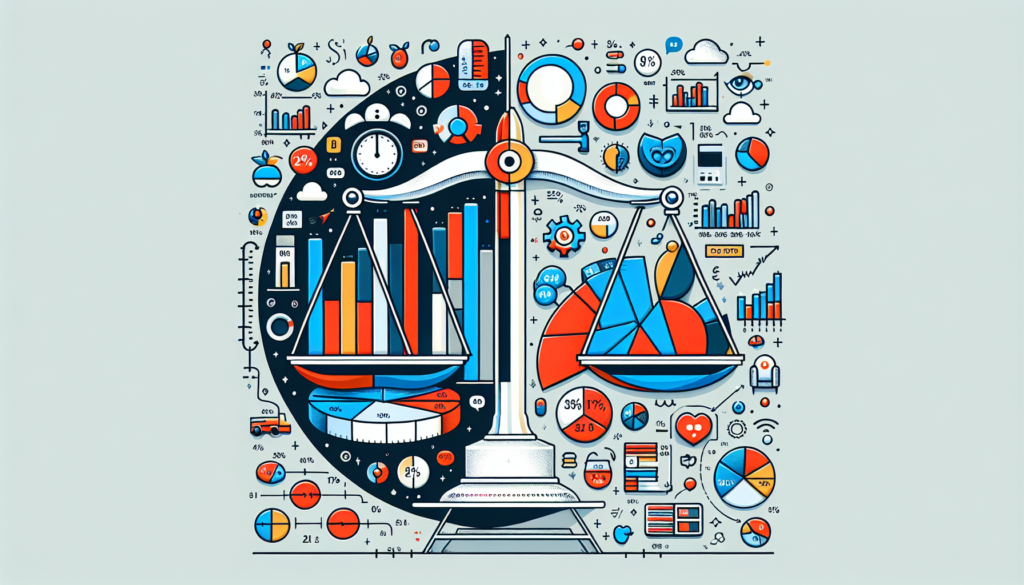In the era of big data, data visualization has become a fundamental pillar for the communication of complex information, enabling the quick understanding of trends, patterns, and hidden anomalies in large data sets. Effective visualization design requires not only a solid theoretical foundation in statistics and information theory but also a deep understanding of cognitive psychology and graphic design principles. In this comprehensive analysis, we will tackle best practices that ensure the creation of effective data visualizations and discuss the most common mistakes that can lead to misinterpretations or inefficient cognitive processing by advanced users.
Fundamental Principles in Data Visualization
Firstly, it is essential to understand that good visualization starts with a clear purpose of what is to be communicated. Edward Tufte, a pioneer in the field, coined the concept of “statistical integrity”, arguing that this should be the foundation of any good design in visualization. In turn, Jacques Bertin laid the foundations of graphic semiology, emphasizing the importance of visual variables such as size, color, and orientation to convey information correctly.
Perception and Cognition
Humans process visual information through perceptual and cognitive processes that must be considered when designing visualizations. Research in this area shows us that visual attributes such as position, length, and color are perceived more quickly and accurately than others such as area or volume.
Gestalt Theory
Gestalt theory is relevant in data visualization design; it teaches us that people perceive images as whole structures and patterns rather than as sums of individual parts. Applying principles such as proximity, similarity, and continuity can facilitate the interpretation of data by promoting natural visual groupings.
Data Visualization and Narrative
Adopting storytelling techniques in data visualization can increase the impact and memorability of the information presented. Here, the sequentiality, framed in a beginning, middle, and end, guides the user through the story that the data wants to tell.
Best Practices in Data Visualization Design
1) Clarity and Precision: Precision should not be sacrificed for the sake of aesthetic simplicity. The visualization must accurately represent the magnitude and nature of the data.
2) Simplicity: Eliminating unnecessary visual noise, such as background images or strident colors that do not contribute to understanding the data, focuses attention on important information.
3) Consistency: Maintaining a consistent style across multiple visualizations facilitates comparison and tracking through different data sets.
4) Adaptability: Visualizations should be flexible for different devices and resolutions, ensuring that the user experience is optimal regardless of the platform.
5) Attention to Color: It should be used in a way that helps differentiate or highlight key information, considering accessibility, such as color blindness.
6) Readability: Both typography and text size must be readable, also taking into account the contrast with the background and other graphic elements.
7) Use of Annotations: Clarifying patterns, marking significant trends, or indicating anomalies can be vital for interpreting the data.
Case Studies: Successes and Failures in Real Visualizations
Examining cases such as the well-known ‘John Snow’s cholera map’, which revolutionized epidemiology, we can see how correct geolocation of data and simplicity can reveal valuable insights. On the contrary, the analysis of the inappropriate use of pie charts in financial reports illustrates how the wrong choice of visualization can obscure the true relationship between data sets.
Common Mistakes in Data Visualization Design
1) Excessive Complexity: Over-engineering or including too many elements can overwhelm and confuse the user, hiding the key points that the data wants to communicate.
2) Ambiguous Interpretation: A lack of clarity in the direction and purpose of graphics can lead to multiple or misguided interpretations, compromising the objectivity of the presented data.
3) Misleading Colors: Inappropriate use of color can perceptually alter the relative importance of data. For example, warm colors tend to stand out over cool ones, which can bias interpretation.
4) Lack of Scalability: Designs that do not adapt to different screen sizes or resolutions can lead to incorrect or incomprehensible visualizations on some devices.
5) Ignoring Cultural Context: Symbols and colors may have different connotations in various cultures, which could potentially alter the reception of the information presented in different regions.
Conclusions and Prospects
Data visualization is in constant evolution, and now new frontiers such as immersive visualization are being explored thanks to virtual and augmented reality. These technologies promise to open paths for multisensory and multidimensional data representations.
The future of data visualization design may also be marked by enhanced personalization and interactivity, providing richer and more adaptive experiences for users. The intelligent use of artificial intelligence to interpret large amounts of data and recommend the most effective type of visualization for particular data sets is an emerging area of research that could revolutionize how we approach data visualization design.
In conclusion, designing high-quality data visualizations is both an art and a science. Designers must balance the demands of statistical precision with aesthetic principles and usability practices, while navigating technology demands and user expectations. Expertise in data visualization in the near future will require a multidisciplinary convergence, emphasizing the synthesis of technical skills, creativity, and empathy with the end-user.

